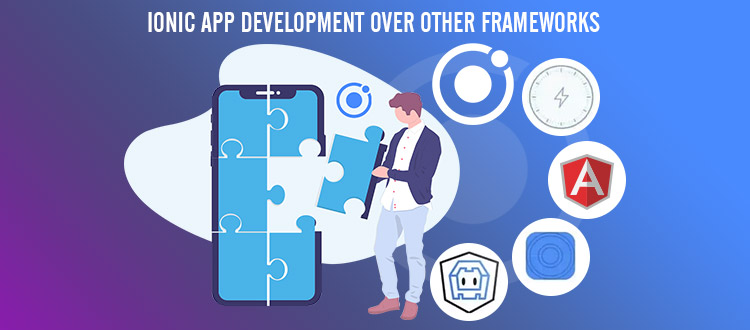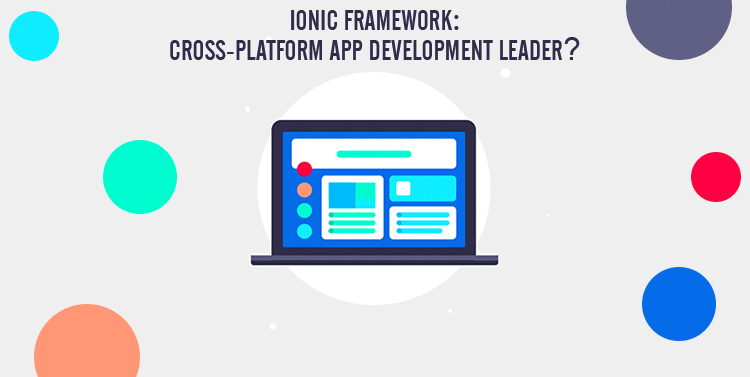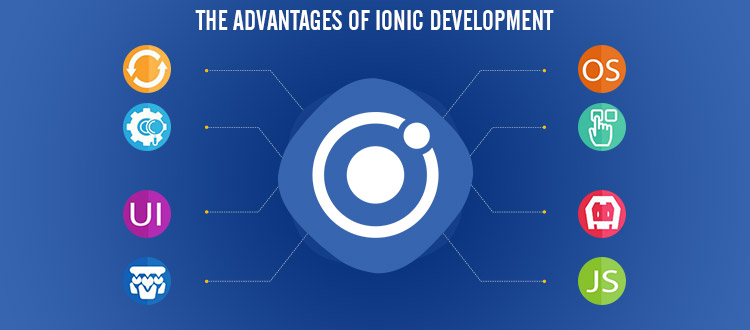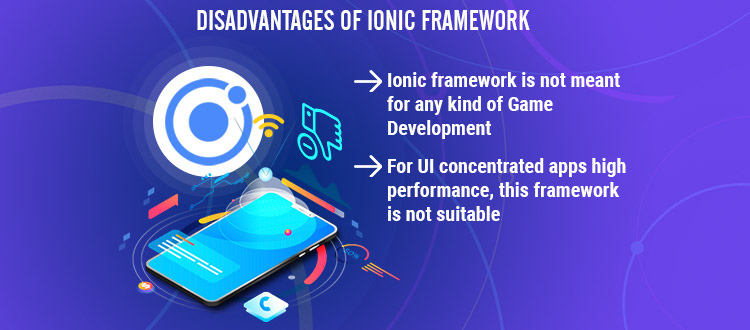Building a robust mobile application is a hell of a task. There are two major platforms for which the apps are usually built – Android and iOS. Java and Kotlin are the languages that are used in building Android applications whereas developers use Swift or Objective C to build apps for iOS. Native Development is known for its performance as it offers optimum performance, API integration, easy to access hardware controls, and many more.
But one thing also needs to be taken into consideration that native app development is a costly affair as you can be assured that your expenses will get doubled depending on how many platforms you want to cover. This means two separate applications, two codebases, two separate development teams, and double the expenses.
Instead, you can develop an app using cross-platform technology with the help of tools like React Native, Flutter, and Xamarin. Performance-wise these tools are close to native and allow a single codebase to be shared between both the platforms that ultimately reduces the overall expenses on development. The framework enables ionic developers to create robust cross-platform applications with the help of web technology.
You can see our other articles where we have clearly differentiated cross-platform and native application development but in this article, we will be focusing on another tool for mobile application development which is called Ionic and which utilizes web technologies. You will develop an understanding of the Ionic framework and its pros and cons. Also, you will get to know the advantages of the framework over hybrid and native technologies in mobile applications.
What is Ionic Framework?
Ionic Framework is one of the best open-source mobile app development frameworks used to create cross platform mobile apps for multiple platforms using a single codebase. It is based on the AngularJS web framework and uses Cordova to compile native apps for iOS, Android, and Windows Phone.
The framework includes a number of pre-built components that you can use to build your app, including user interface components, data storage, and more. In addition, Ionic Framework can be used to develop Progressive Web Apps (PWAs), which are web apps that offer many of the same features as native mobile apps. Ionic Framework is an excellent choice for developing cross platform apps due to its wide range of features and ease of use.
Apache Cordova and Angular Based
The initial versions of Ionic were based on Angular, which is considered as one of the popular front-end frameworks used to build dynamic web pages and progressive web-based applications. Ionic and Angular CLI (Command-line Interface) can work together to create fully-functional mobile-based applications.
Another part of Ionic based on native functionality is based on Apache Cordova plugins. Cordova is a tool that is used to build mobile-based applications using web-based technologies. It relies on its own APIs instead of those which are platform-specific. By default, Ionic doesn’t have access to the hardware APIs of the device as long as Ionic uses WebView. The job of Cordova is to provide those APIs bundled with plugins to gain access to functions like a smartphone’s sensor, camera, or gyroscope. Cordova Bridge is the second name of this set of APIs. Apache Cordova acts as a bridge between the WebView and the operating system of the device.
Ionic Native
Application building needs to be very precise, especially if you want to reach every bit of the desired functionality. Ionic Native was created to fulfill that purpose. It comprises a set of Cordova plugins designed to support and assist standard APIs and integration. Ionic native comes with a free as well as a paid version. The free set is called the community edition, whereas the paid one is called the enterprise edition which is an extended version curated by the team of Ionic.
Ionic v.4 and Web Components
Since its inception, Ionic has been dependent on the components of the Angular framework as a tool for Angular users. The modification or change came into the scene with the fourth and the latest version of the Ionic, which is full of new stuff.
Ionic became framework-agnostic with its fourth version which means it is independent of Angular. The initial planning was to provide support for React and Vue.js, but as of now, no framework is needed to use the Ionic framework. The utilization of web components along with the promotion of Ionic’s CLI made possible the change to occur. The CLI has now been transformed to work with Angular CLI. So there is always an option to work with Angular but also use other compatible frameworks in order to diversify the technology stack that can be used with Ionic.
Shifting to web components is yet another big change. Web components comprise sets of features that use standard APIs supported natively in almost all mobile browsers in the current scenario. The usage of web components helps in utilizing any frameworks with Ionic. Web components are in a way encapsulated HTML components that are compatible with each other. A custom iOS and material design are contained in each of these elements by default.
This makes the task of theme identity across numerous apps quite easy. As per the announcements the distribution of Ionic will be done as per the set of more than 100 web components. The ionic team to support this initiative launched Stencil which is a diversified library of web-related components and a tool to build new ones.
Ionic Starter Pack
With Ionic, there are a couple of things you need to start to develop. All thanks to the team of Ionic as it has precise documentation covering multiple topics including a guide for beginners. So this section will throw light on some of the links or recap of some of the earlier mentioned points in the article:
- General Purpose Documentation – This documentation takes into account CLI installation app development start, platform launches, along other relevant information.
- Stencil Library – This library is used to build and download web components.
- Official Migration Guide – Due to the fact that there are a lot of applications written on that version, the Ionic team’s documentation has a concise migration guide on the number 4th ionic version.
- Cordova plugins Repository – A set of APIs is provided by Apache Cordova to access native functionality.
- Integrations Page – This offers a list of modules, tools, and native plugins that can be integrated into your application.
- Capacitor Plugins Repository – This is yet another platform for Ionic providing APIs for connecting with the hardware of the device. The plugins which it provides can be downloaded from npm.
Ionic provides vast capabilities to develop mobile apps and spreading them across multiple platforms. But as you see that every technology has its advantages as well as disadvantages. We’ll start with the pros or advantages.
The Advantages of Ionic Mobile App Development
A lot of conveniences and benefits are offered by the Ionic framework in terms of mobile application development. This covers more than 3.5 percent of the whole mobile application market according to the reports published by AppBrain.
Single Codebase for Multiple Platforms
The core technologies of Ionic for app development include Angular, Apache Cordova, HTML, CSS, and JavaScript. The latest versions of Ionic offer framework-agnostic capabilities for the first time but still, you can make use of Angular that has its own pros and cons.
With that being said, Ionic empowers you to create mobile-based applications without hiring native developers. Anyone familiar with web technologies along with Angular can use it. The person can leverage web skills for creating fully functional and responsive applications. This ensures:
- Faster time to perform marketing for both platforms.
- Reduced development costs, hiring native developers, and codebase maintenance.
- Ease of maintenance with the help of built-in browser instruments and tools for debugging
- Ease of transforming your Ionic app into a desktop application or PWA
Popular Technologies and Convenience to Learn
Web technologies are highly spread all across with the most popular language being JavaScript. As per the survey conducted by Stack Overflow 2019, front-end developers are amongst the third largest group of developers around the globe. If you have Ionic as your tool for mobile application development then you will have no worries hiring developers for your dream project.
Ionic is quite easy to learn and implement. Front-end developers can easily learn the basics and acquire the skills to operate all the various web frameworks that are compatible with Ionic.
If you have some prior experience in native development then it will be a plus for you as Ionic does not compile the whole application into a native language. Instead, its job is to compile UI elements using Cordova or Capacitor plugins for the remaining functionality. The process and building and maintaining an application with just the web technology stack is quite easy. But if you have to develop or fix a custom plugin then in such a case you will be needing an iOS or Android Developer.
Cross-Platform App Development
The Ionic framework is compatible with iOS 7 and up and Android 4.1 and up. Ionic also supports the UWP (Universal Windows Platform) to develop applications for Windows 10. With Ionic, you can easily build robust mobile applications. You may be interested to know how is cross-platform app development playing a vital role in giving a boost to your business?
User Interface
Components and themes of Ionic are extremely customizable With the Ionic platform, the components to adapt the platform on which the application is running.
Optimum Performance
The performance is optimum when you use Ionic with native mobile app code in Apache Cordova compared to other Hybrid applications. With AngularJS, Ionic is able to rely on native hybrid acceleration. CSS transitions are used by Ionic as a method for leveraging the GPU and multiply the available processor time.
Built on AngularJS
AngularJS is used by Ionic for providing multiple functionalities to the developers. The designers use AngularJS as it is a widely used framework. With AngularJS, Ionic is able to provide a robust structure making the entire code more manageable. With the assistance of Ionic structure, AngularJS allows the development of hybrid applications.
Cordova Plugins
Cordova plugins are being utilized by the Ionic framework for helping designers to accelerate various components. Cordova plugin is used by Ionic for accessing useful features like GPS, Camera, Flashlight, etc. Mobile application developers can easily utilize these modules in order to build their applications.
Also Read: Ask Me Anything About React Native, Flutter, Ionic App Development
Disadvantages of Ionic Framework
Security Concern
If you are a business owner, your developers have to secure the application keeping in mind both web and native app security solutions.
Speed Might Be an Issue
When you create a native app the speed is generally much higher due to its functionality as compared to the app which has been developed using the Ionic framework. However average users will not notice the gap in terms of performance to that extent.
Not Suitable for Gaming
If you are a developer, the Ionic framework won’t be perfect for you in case if you are into game development. The game development genre is mostly avoided while using the Ionic framework. For that, the widely used frameworks are Flutter and Unity.
More Management
You may have to handle security issues that are much prevalent while working with the Ionic framework. The issues might occur in both web and native applications, but it is not an impossible task.
Is it Worth Creating Apps with Ionic?
In the end, let us conclude that Ionic is a useful tool/framework that enables developers to create robust cross-platform applications with the help of web technology. An independent developer can build a cross-platform application by making use of only one codebase. As far as the security issues are concerned, the Ionic app needs some more security features as compared to a native one and that’s something that is still a matter of concern. But if the project is handled by an experienced developer then the scenario is completely different.
When we talk about risk, a cross-platform application doesn’t create any more risk as compared to a web or native application. Also, Ionic is quite affordable as compared to the other frameworks and you can easily save time, and resources with that. Also, it is fully functional and you can create fully functional and advanced mobile applications for various platforms along with the web at the same time. You can contact
The Ninehertz we have talented developers in our team who are well experienced working with Ionic and other popular frameworks of web and mobile technology.
Great Together!





![How to Create an App like Careem? [Cost in 2026]](https://theninehertz.com/wp-content/uploads/2024/09/how-to-create-an-app-like-careem.webp)







